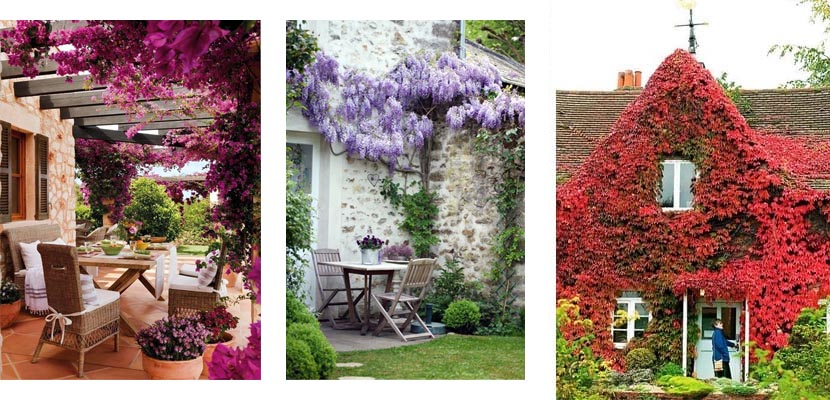
Both climbing plants and vines are a great ally for upholster the facades and walls of our home and make these surfaces more attractive. It is also common to cover with them pergolas and other structures in order to provide shade to the garden.
Although we commonly call them all vines, the differences between plants creepers and creepers are clear. The former have aerial roots that allow them to adhere to surfaces; the second, on the other hand, require a support or guide to be able to climb up them. A difference that you should take into account along with other factors such as the weather or sun exposure to choose the most appropriate one.
Buganvilla
Bougainvillea is a fast growing vine and evergreen, although in very intense winters it can lose its leaves. Despite having a tropical origin, it adapts well to climates marked by hot summers and cold winters, as long as we avoid temperatures below 3ºC.
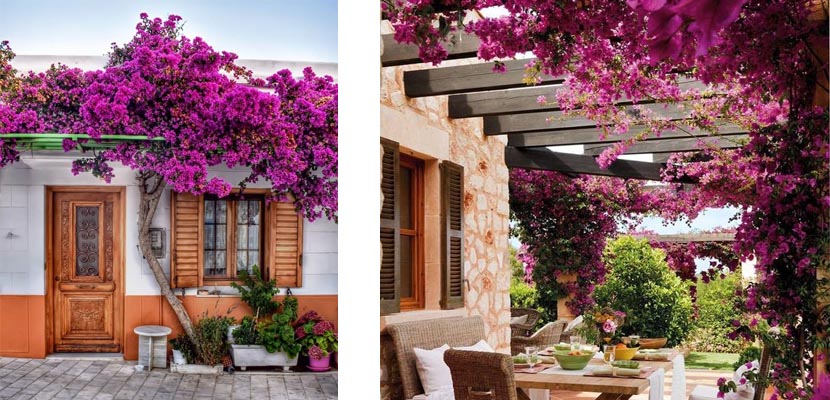
It is a plant with colored bracts as spectacular as fuchsia, orange, red or yellow. Needs a large amount of light to develop properly but is not demanding or difficult to cultivate. If we provide everything you need, it can reach 10 meters in height, a perfect height to color facades and pergolas.
Clematis
Clematis is a showy-flowered climbing plant with a jasmine-like scent. Native to the English countryside, most of its varieties can be grown in any type of climate, although they prefer cool climates. A semi-shady place with a high degree of humidity where your flowers receive the morning light would be ideal for their development.

It is an easy-to-grow plant with only two requirements in addition to the location, the fertilizer and the pruning. If you want to enjoy it year after year, pruning is a fundamental aspect, but it is particular according to its variety as is the subscriber. Find out where you buy this plant what you need.
Wire creeper
This climbing plant native to New Zealand is very resistant, both cold and drought. Vigorous and compact in growth, it has sarmentous and purple stems that can reach up to 5 meters in length. The leaves, abundant and small, have a rounded shape and a beautiful bright green color.

It can be used in addition to as a climber to cover walls and pergolas, as an upholstery or hanging plant. Prefers full sun exposure but can also thrive in semi-shade. You will also like to know that they are appropriate for coastal gardens due to its resistance to wind and salinity and that they tolerate frosts of up to -10 ºC, although in those cases it will lose its leaves, sprouting again in spring. It will require that if an annual pruning in late winter to control its growth.
Wisteria
Wisteria is one of the most spectacular climbing plants. It has showy flowers pink, lavender or white and gives off that they also give off a pleasant aroma. They are very resistant to cold but in order to have a good flowering they must be exposed to direct sun or in a semi-shaded location.
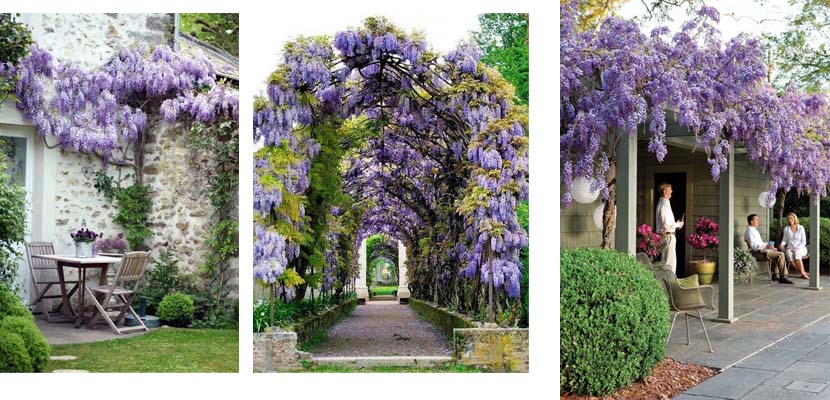
Wisteria adapts very well to different types of soil, especially those that retain some moisture. It does not need special care except for regular pruning if we want to keep it under control. Wisteria is tremendously invasive and it has a lot of strength; depending on where we plant it, it can be harmful to gutters, terraces and other elements).
Ivy
Ivy is a climbing shrub with short aerial roots that allow it to adhere to the walls and walls and spread across the ground. It is a very appropriate plant to cover north-facing walls, located in shady or semi-shaded places.
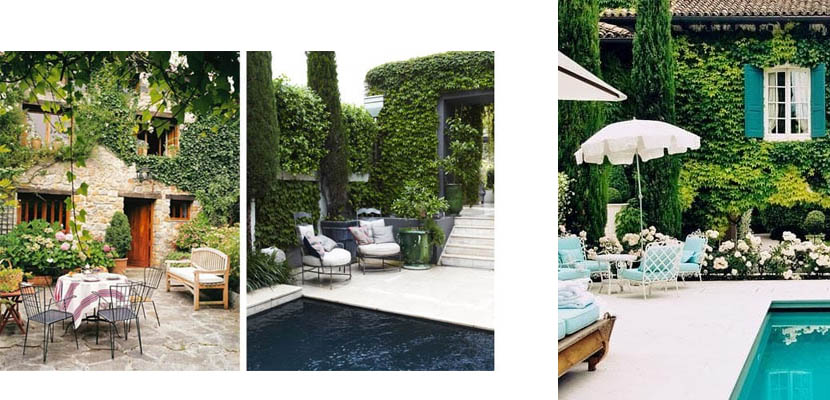
There are many types of ivy, all of them evergreen and with a wide variety of leaves: green or variegated, large or small ... The large leaves are more vigorous and cover surfaces earlier, however, over time they become difficult to control. Small-leaved ones take a little longer to thicken, but they stick much more to the wall and their overall appearance is much neater.
Ficus pumila
Ficus Pumila is a climbing plant with weak stems and small, nuanced, heart-shaped leaves. Is a understory plant, so it prefers a semi-shady place where the direct sun does not reach. It performs well in temperate climates, being able to survive at minimum temperatures of -5 ºC, being suitable in these cases to plant them against an exterior wall facing north, slightly protected from the wind.

It can also be used as a hanging plant or as a covering plant or ground cover. For it to develop fully, however, your earth stay moist during warm seasons, avoiding waterlogging. In winter, on the other hand, the waterings should be reduced, while the plant rests.
Climbing jasmine
There are many species of jasmine, but all of them are fast growing. Thanks to your pleasant aroma and the delicacy of its white flowers, it is one of the perennial vines most used to decorate facades and to decorate pergolas and gazebos. It is also a very resistant plant that despite preferring heat perfectly withstands cold and even frost if we cover its roots.

Prefer a Sunny place but grows well in semi shade. It demands good drainage, regular watering in summer, and a regular dose of compost between spring and fall. You can also prune it after winter to control its growth.
Virgin vine
The Virgin Vine is a deciduous climbing shrub with cylindrical branches and tendrils like suckers that can exceed 15 meters in height. Although the most characteristic of this plant, without a doubt, are its dark green leaves for acquiring a precious red color in autumn. Due to its rapid growth, it is very popular to cover facades, walls and pergolas facing north or east.
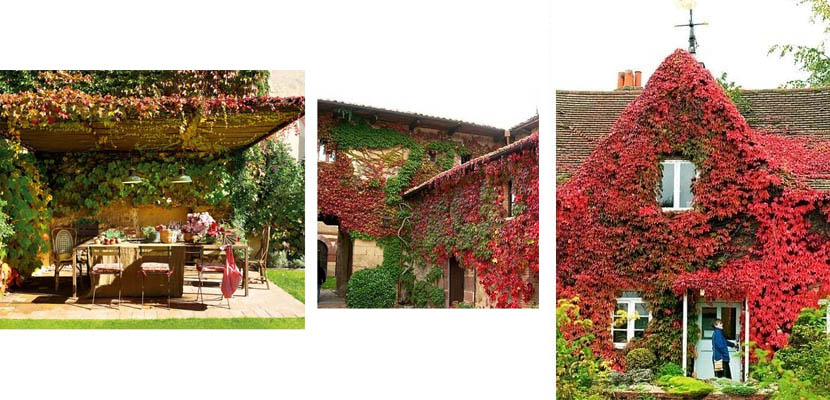
Resist the cold to about -15 ºC -something rare among the vines- and the heat of summer. It is a plant, off-road. It likes a deep and humid soil, so in summer we will have to make sure to water it with a certain frequency without flooding it. It does not need pruning, but it is convenient to cause the plant to produce more branches and to control its growth on facades.
Climbing Rose
There are many varieties of climbing roses, with flowers of different colors, with and without aroma and with or without thorns. In general, all of them grow very fast and with great volume. They require for this direct contact with light solar and regular watering during spring and summer that will be drastically reduced in winter.
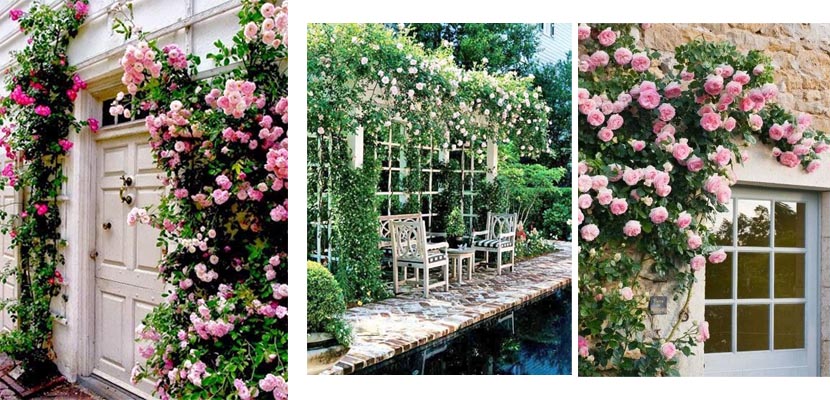
To cover the facade we can choose from a wide variety of rose bushes. To cover a pergola, however, it is best to choose varieties whose stems are more flexible, to make it easier to guide them through the structure.
Do you have any of these vines in your garden?